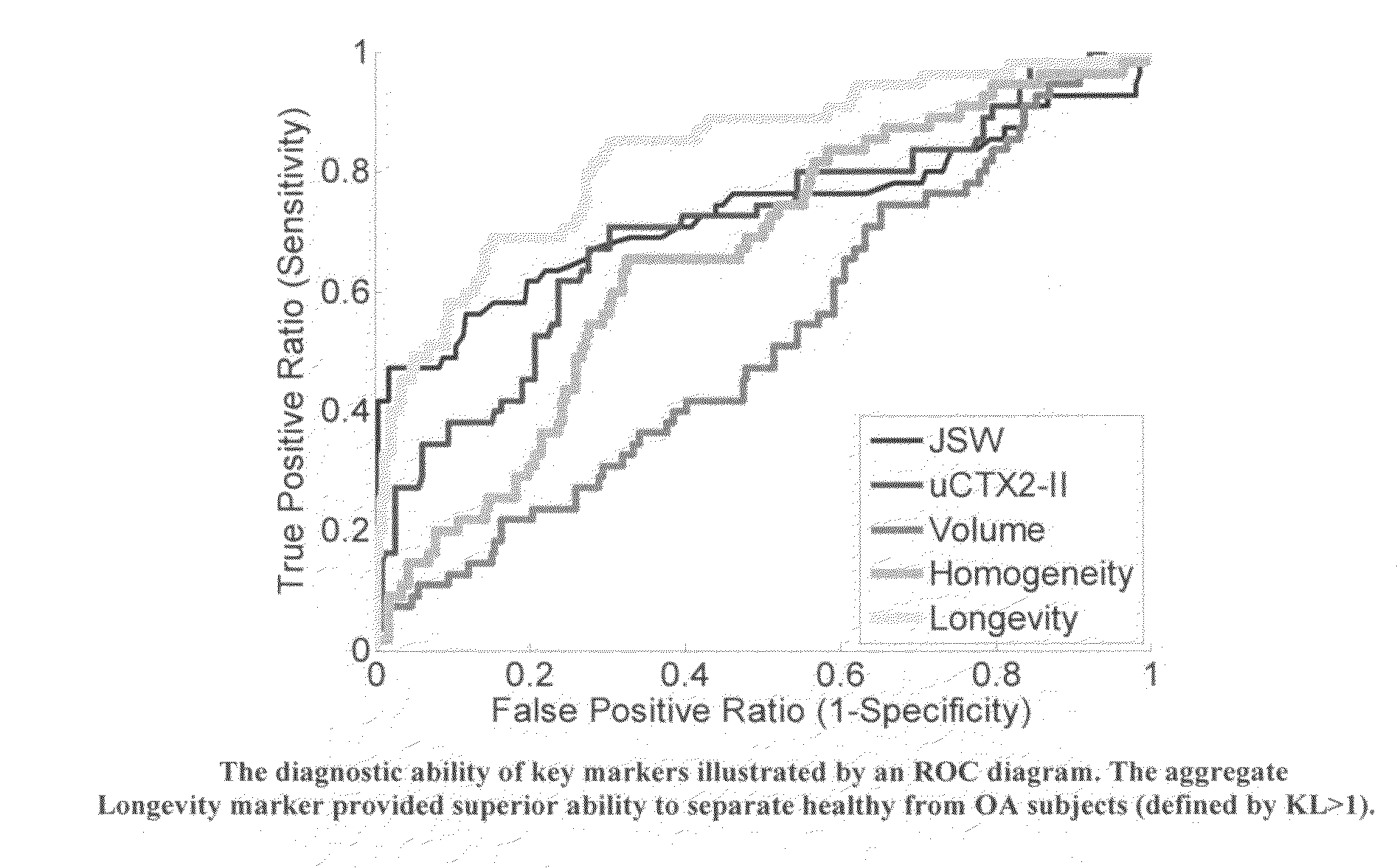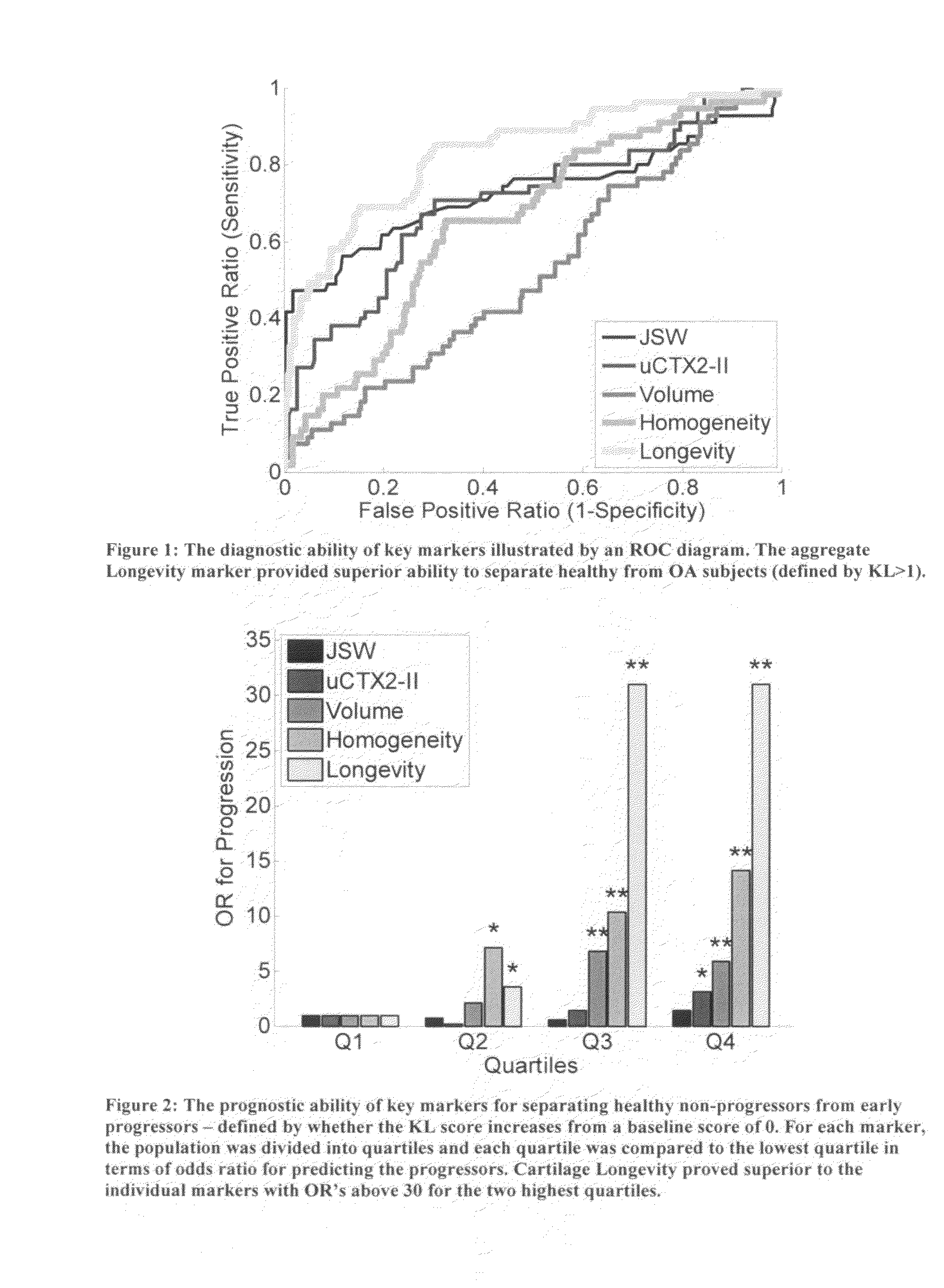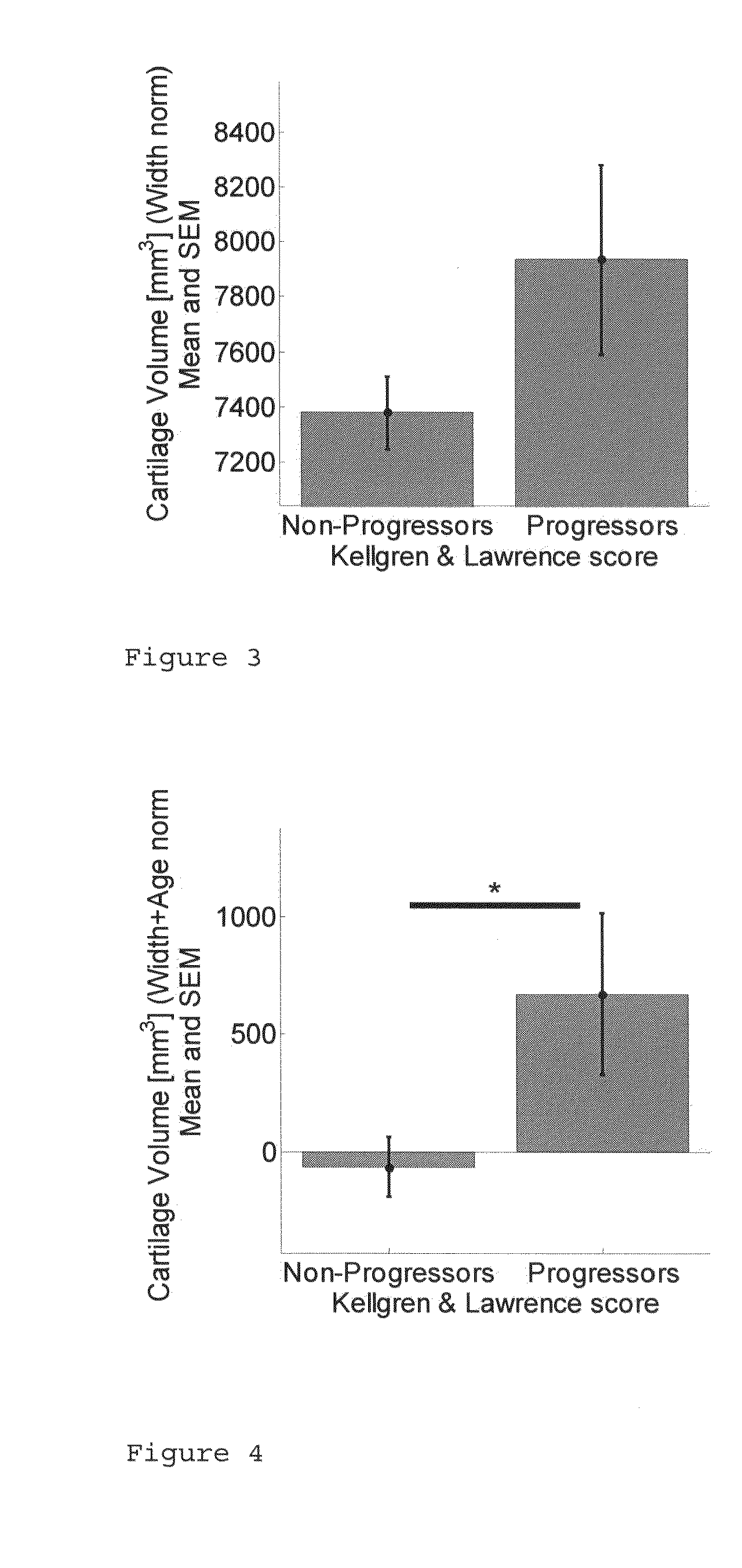Prognostic osteoarthritis biomarkers
a biomarker and osteoarthritis technology, applied in the field of osteoarthritis biomarkers, can solve the problems of aggravated implications, lack of effective treatment beyond, and a high probability of ageing of the population, and achieve the effect of improving discrimination
- Summary
- Abstract
- Description
- Claims
- Application Information
AI Technical Summary
Benefits of technology
Problems solved by technology
Method used
Image
Examples
Embodiment Construction
STUDIES
[0058]To investigate how biomarker values can be combined to discriminate between patients with early stage osteoarthritis with a higher and lower probability of disease progression we carried out the following study. Biomarkers from radiographs, urine samples, and MRI for this study were acquired at baseline (BL), after 1 week for a subgroup, and then at follow-up after 21 months (FU). A subgroup had BL data re-acquired for precision evaluation.
[0059]The study included 159 randomly selected men and women such that the population had a normal group with a large age span as well as a large group with elevated risk of having knee OA. The risk group was selected based on age and known knee problems. The exclusion criteria ensured that none of the subjects had previous knee joint replacement, other joint diseases (e.g. rheumatoid arthritis, Paget's disease, joint fractures, hyperparathyroidism, hyper- and hypothyroidism), contraindications for performing MRI examination, or were ...
PUM
 Login to View More
Login to View More Abstract
Description
Claims
Application Information
 Login to View More
Login to View More - R&D
- Intellectual Property
- Life Sciences
- Materials
- Tech Scout
- Unparalleled Data Quality
- Higher Quality Content
- 60% Fewer Hallucinations
Browse by: Latest US Patents, China's latest patents, Technical Efficacy Thesaurus, Application Domain, Technology Topic, Popular Technical Reports.
© 2025 PatSnap. All rights reserved.Legal|Privacy policy|Modern Slavery Act Transparency Statement|Sitemap|About US| Contact US: help@patsnap.com



